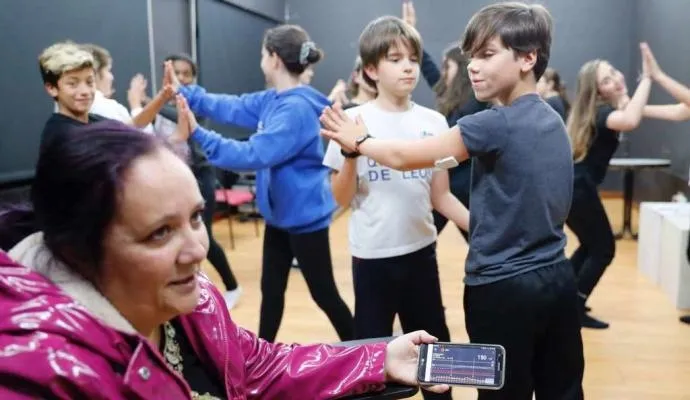Pablo is eleven years old and next weekend he will go to his first party of Pajamas.The type I diabetes suffers, until now, had not allowed him to sleep far from his parents who, every night, rose to control glucose levels due to the risk of hyperglycemia.
Now they can do it at a distance, from their mobile and real time.They use a free and free system created by and for diabetics and their families, which sends the information of their sensor to a website to which they can be connected from different devices.It is the international and non -profit project Nightscout.
"For your child's health you insist on whatever, even learning computer science," says his mother Lydia García Costas.
They had already taken an important step at the beginning of the year by leaving the six punctures that, at least, needed daily to measure the blood sugar level and adjust the insulin doses.He went to continuous monitoring with a sensor attached to his forearm.
But although he frees him from the pecks, he had to spend a reader over every time he wants to know how he is.They have now attached a system that allows you to extract these data and send them by Bluetooth constantly to a nearby mobile - the one that Pablo carries - and this terminal bounces them in turn to a personal website, where their parents consult at any time howthis.
Not only does it allow them to see the value at the same time, but it is a much more exhaustive control and facilitates decision making indicating with an arrow how it will evolve.They can also program alarms that alert them when they approach a hyper or hyperglycemia.So they don't have to wake up several times at night to see how it is."Today I slept from the pull- Lydia is congratulated," was before it was unimaginable. "
And how did they find out about this?In the chat they share with other parents of diabetic children, ane partners, to support and give advice.
In the association, formed by some 130 families in Galicia, more than half already use the tools that the Nightscout international community has developed, which was born in the United States five years ago, formed by parents and diabetics that were not willing to wait forThe industry will develop solutions to have real -time information at a distance.
Today, most commercial houses have already developed them, but many families prefer this system for cost savings - even, they manage to stretch the useful life of some sensors - and because, in some cases, they improve the benefits of official applications.
Savings, in continuous monitoring systems that are not yet financed mostly by Health -waiting to see how the efficacy study that will do health with children under 4 to 17 years old -can reach a thousand years old -can reach the thousandeuros a year.
In addition, regardless of the sensor brand from which the information is extracted, it will be read on the website in the same way, which allows the data in a unified format that allows research - with which they are given anonymously - or facilitates theI work to the doctor, if you want to directly consult the website of each patient.
Following the "chain of favors" philosophy, parents help each other to install these systems and talk about families.Everyone agrees that what reports the most is "tranquility."
"At all times I know how my children are, even if you are not with them," says the anex secretary, Big Estíbaliz.
Lydia no longer has to interrupt Paul's theater class several times to measure glucose or wait for the child to be bad to intervene.In fact, it no longer reaches these episodes of hypo or hyperglycemia, because the mobile vibrates to put remedy before.Paul's healthNote and those around him too."Everyone says it has a better face."


